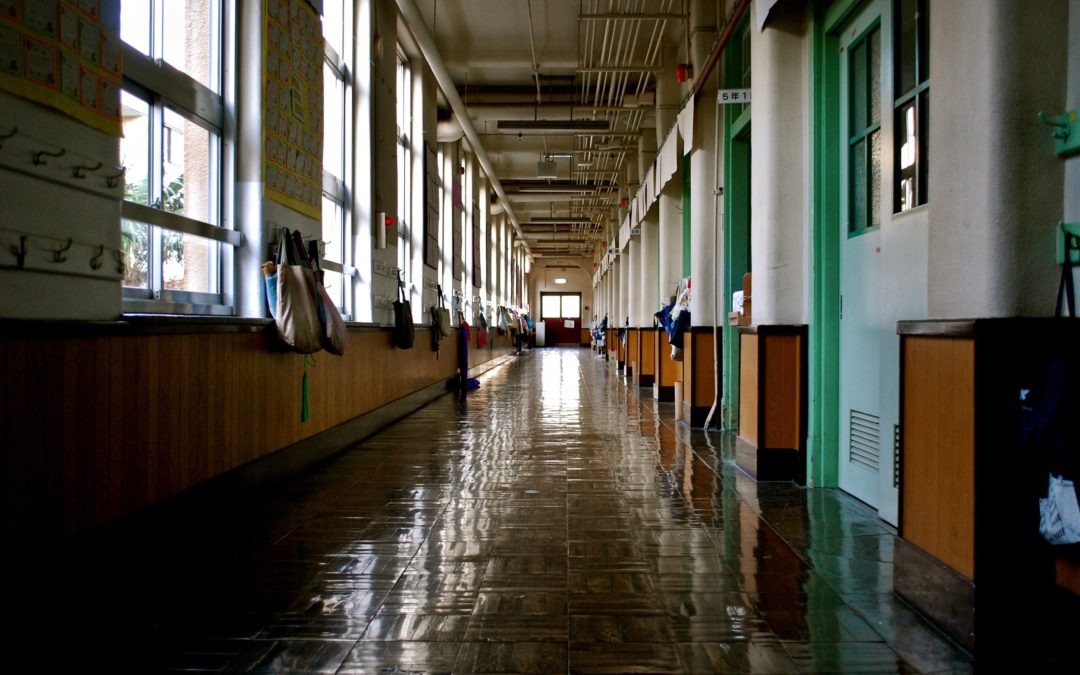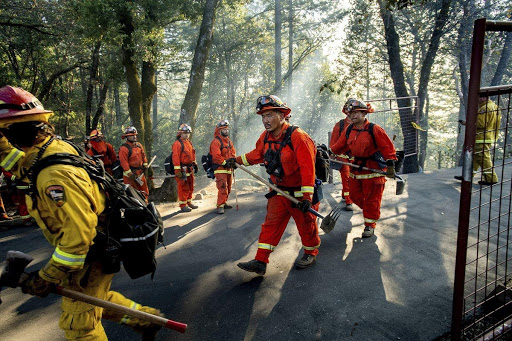
by Derrick T Lewis | Aug 24, 2023 | Latest, Social Justice |
Investigative work by the Federal Bureau of Investigation (FBI) into the behavior of law enforcement officers in a Northern California precinct has resulted in a series of indictments. The probe, initiated one and a half years ago, scrutinized the officers’ use of force, examined their text messages, and considered complaints lodged by local residents.
On a specific Friday (18th of August), the US Attorney’s Office located in the Northern District of California made an announcement. It stated that a federal grand jury in San Francisco had returned four indictments. These charges were against ten individuals—both current and former officers and employees of the Antioch and Pittsburg precincts.
The Charges
The Antioch officers—Morteza Amiri, Eric Rombough, and Devon Wenger—were each slapped with several charges. These included conspiracy against rights, deprivation of rights under color of law, and the destruction/falsification of records related to federal investigations.
Their alleged misconduct involved discussions about their plans to employ excessive force against citizens. They also unnecessarily deployed K-9s, and other violent actions that were labeled “less lethal”. The indictment, in its 29 pages, also revealed that they shared photos of injured suspects via text. These images were accompanied by messages such as “Yeah buddy, good boy pursy” and “F**k that turd.”
Previous Reports
Earlier in May, REVOLT reported that over a dozen Antioch officers were identified in the FBI’s probe. This investigation was looking into a series of racist texts that dated back to 2019. The messages were described as abhorrent and reprehensible. They depicted an “entrenched culture of hatred, racism, homophobia, misogyny, and violence” within the department. Later in that month, a civil lawsuit was filed against the precinct. This was done on the behalf of five residents and a relative of a man who was fatally shot by an officer.
Mayor’s Response
The Mayor of Antioch, Lamar Thorpe, took to a press conference to discuss the grand jury’s decisions. “To those that have accused me and others of being anti-police for seeking to reform the Antioch Police Department, today’s arrests are demonstrative of the issues that have plagued the Antioch Police Department for decades,” Thorpe said, as reported by NBC Bay Area.
Other Indictments
Amiri is also one of five officers implicated in a college fund fraud indictment. This includes charges for conspiracy to commit wire fraud and wire fraud. Wegner is one of two named in a steroid distribution indictment. This includes conspiracy to distribute and possession with intent to distribute anabolic steroids, and destruction, alteration, and falsification of records in federal investigations. A fourth obstruction indictment lists one officer, Timothy Manly Williams, along with deprivation of rights, obstruction of official proceedings, and the alteration, and falsification of records in federal investigations.

by Tanyette McCoy Davis | Mar 21, 2023 | Latest, Social Justice |
In response to the recent police brutality cases that have garnered national attention, California is proposing a new law that would allow victims of police brutality to receive compensation from the state. This proposition would create a fund to pay for damages suffered by victims of police misconduct, and would be funded by a surcharge on fines and bail schedules for criminal offenses.
This proposition is an important step in addressing the problem of police brutality, as it would provide some measure of justice for victims who have often been ignored or mistreated by the system. It is also a reminder that police officers are sworn to protect and serve the public, and when they violate that trust, they should be held accountable
One high-profile case that garnered national attention was the death of Oscar Grant. On New Year’s Day in 2009, Grant was fatally shot by a BART police officer while he was lying face down on a train platform. The officer claimed he mistook his gun for a Taser, but many felt that the shooting was unjustified.
The incident led to widespread protests and calls for reform. In response, the state legislature passed a law requiring all police agencies to report data on use of force incidents. However, this law was not enough to prevent further cases of police brutality from occurring.
In 2016, it was estimated that there were over 400 cases of excessive force by police officers in California. This number is likely higher, as many cases go unreported. Victims of police brutality often feel like they have no recourse and that their complaints will fall on deaf ears.
The proposed bill, AB 931, would allow people who have been victims of police brutality to seek compensation from the state. The bill would create a fund to pay for damages caused by police officers, and would also allow victims to file lawsuits against the state. The bill has been proposed in response to the death of George Floyd, who was killed by a Minneapolis police officer.
AB 931 could have a significant impact on police departments across California. If the bill becomes law, it is likely that more people will come forward with claims of police brutality. This could lead to increased scrutiny of police officers, and could result in more officers being fired or disciplined. It could also lead to changes in the way that police departments train their officers and handle complaints of misconduct.
Police brutality is a serious problem in the United States. In 2015, 1,134 people were killed by police officers, and many more were injured. Of those killed, 42% were African American. Police brutality disproportionately affects communities of color.
In response to this problem, California has proposed a new law that would allow victims of police brutality to receive compensation from the state. The bill, which was introduced by Assemblymember Shirley Weber (D-San Diego), would create a fund to pay for damages caused by police officers who use excessive force.
California’s proposed bill to allow police brutality victims compensation is a major step forward in the effort to prevent and hold law enforcement accountable for their violent actions. If passed, it could create an important legal precedent that would help protect those affected by police violence and ensure that justice is served. It also sends a message to all involved parties—from politicians and law enforcement officers, to citizens themselves—that such behavior will not be tolerated in our society.

by Fabiola Noel | Feb 21, 2023 | Latest, Social Justice |
It is no secret that racism still exists today, and this issue is particularly rampant in our schools. In light of Black History Month, an incident occurred at Diablo View Middle School in Clayton, California that highlights how far we have to go to ensure our students learn about the history of African Americans and their contributions to society.
A California middle school student was disciplined for making a racist joke during Black History Month. The student, who has not been identified, put cotton balls in front of his classroom’s Black History Month display. When asked why he did it, the student said he was “making a cotton field.”
These incidents underscore the need for more dialogue about race and racism in our schools. We need to have honest conversations about the ways that racism manifests itself in our society and in our classrooms. Only then can we begin to address the problem head-on.
This incident highlights the problem of racism in America’s education system. Although the U.S. has made great strides in recent years to improve racial relations, there is still a long way to go. Racism is often perpetuated through ignorance and lack of understanding.
The photo and caption were widely shared on social media, sparking outrage among many people who saw it as a racist joke. The school district issued a statement saying that it does not tolerate racism or hatred in any form and that the student had been disciplined according to district policy.
When it comes to racism in schools, there are a lot of different opinions out there. Some people feel that it is an important topic that should be addressed in the classroom, while others believe that it is something that should be left out of the educational setting. No matter what your opinion is, there is no doubt that racism is a problem in our society and it needs to be addressed.
There are a number of educational implications that can be drawn from this incident. Firstly, it highlights the importance of teaching students about the histories and experiences of people from all racial backgrounds. It also underscores the need for educators to create a safe and inclusive environment in their classrooms, where all students feel comfortable sharing their thoughts and opinions. Additionally, this incident serves as a reminder that even seemingly harmless jokes can have harmful consequences.
In the end, the student’s punishment was decided by a school-level disciplinary panel. The student was given detention for three days and will be required to complete an educational project about the harms of racial discrimination.

by Jonathan P-Wright | Sep 14, 2020 | Worldwide News, Latest |
On Friday, the Governor of California Gavin Newsom signed a bill which will enable inmates to work as firefighters upon their release from the prison. He shared the news via Twitter.

by Jonathan P-Wright | Sep 4, 2020 | Worldwide News |
On Monday, lawmakers in California passed a bill that criminalizes calling 911 in what would be deemed discriminatory in nature. Now, the legislation will move to the office of Gov. Gavin Newsom.








RECENT COMMENTS